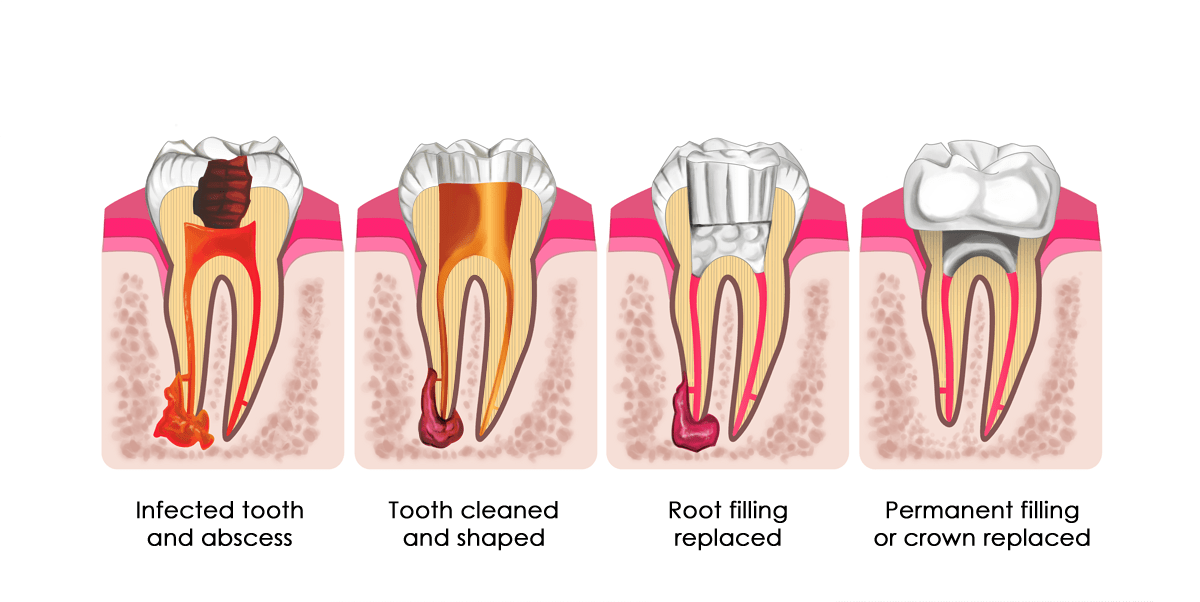
Endodontic treatment (root canal treatment) is necessary when the nerve (pulp), the soft tissue inside the root canal, becomes inflamed or infected. The inflammation or infection can have a variety of causes: deep caries (decay), repeated dental procedures on the tooth, or a crack in the tooth. In addition, a trauma to a tooth may cause nerve damage even if the tooth has no visible chip or crack. If nerve inflammation is left untreated, it causes pain and can lead to an abscess.
Signs to look for include:
- Pain
- Prolonged sensitivity to heat or cold
- Tenderness when touching the tooth
- Darkening of the tooth
- Swelling and tenderness in surrounding bone and soft tissue.
You may not feel any pain in the early stages of the infection. In some cases, your tooth could become darker, which normally indicates that the nerve in the tooth is dying or is dead. This means that a root canal treatment is needed. If the pulp (nerve) becomes infected, the infection may spread through the root canal system of the tooth into the surrounding bone. This may eventually lead to an abscess. An abscess is an infected area in which pus has collected, which causes swelling of the tissue around the tooth. The tooth may be tender when you bite on it and often there is a dull ache; however, at times there is no pain at all. If a root canal treatment is not carried out, the infection will spread and the tooth may need to be removed. The purpose of the root canal treatment is to remove infection in the root canal. Later, when there are no more symptoms from the tooth or at least the symptoms have radically subsided, the root canal is sealed with root filling material (root filling) to prevent any further infection.

